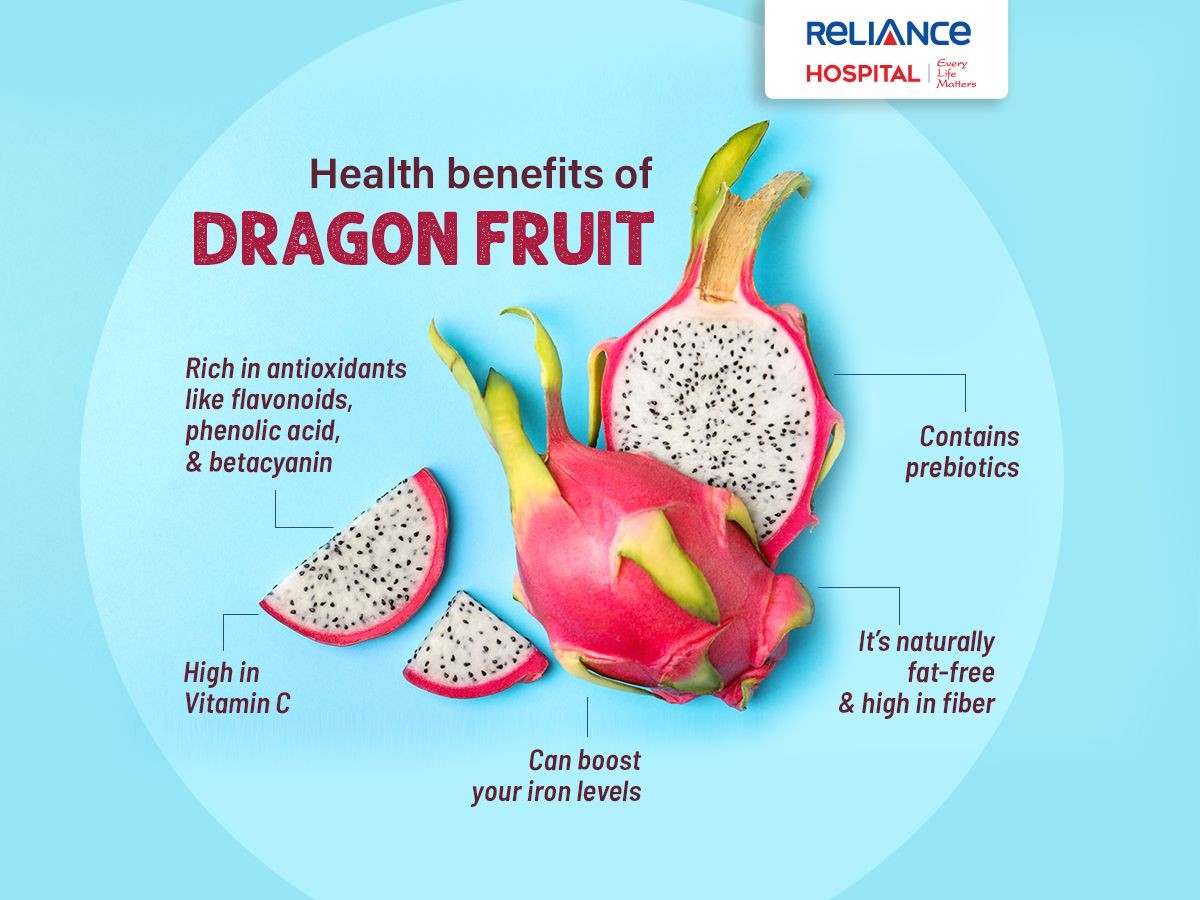
Dragon Fruit: Health Benefits and Nutritional Value
Dragon fruit, also known as strawberry pear or pitahaya, is a tropical fruit with a vibrant red color and distinctive shape. This beneficial fruit is rich in essential minerals and nutrients that support gastrointestinal health and boost the immune system.
Dragon fruit is both delicious and nutritious. It is available in fresh and frozen forms, making it easily accessible for inclusion in your diet.
Not only is dragon fruit packed with healthy nutrients, but it also contains beneficial plant components such as carotenoids, polyphenols, and betacyanins. These ingredients have antioxidant and phenolic properties that contribute to various bodily functions.
Antioxidants are crucial for neutralizing harmful free radicals that can damage cells and lead to inflammation and other conditions. Dragon fruit is an excellent source of antioxidants, which can help prevent chronic diseases like arthritis, cancer, and diabetes.
Dragon fruit contains multiple antioxidants, including vitamin C, betalains, and carotenoids. These antioxidants have been linked to a lower risk of cancer and heart disease.
Dietary fiber is essential for heart health, diabetes management, weight regulation, and digestive health. Dragon fruit provides just the right amount of dietary fiber to meet your daily needs.
Consuming dragon fruit can improve gut health by supporting the development of healthy bacteria in your gut. This fruit contains prebiotics, which are a type of fiber that promotes the growth of beneficial bacteria and can help alleviate digestive issues.
Dragon fruit’s high vitamin C and carotenoid content can strengthen your immune system, protecting your body against infections. Additionally, this fruit is rich in iron, which is vital for oxygen transportation and energy production in the body.
Magnesium, present in small amounts in dragon fruit, is crucial for numerous chemical reactions in the body, including energy production, bone formation, muscle contraction, and DNA creation.
How to Enjoy Dragon Fruit
To enjoy dragon fruit, follow these simple steps:
- Cut the fruit vertically into two halves.
- Scoop out the pulp with a spoon.
- Alternatively, cut the fruit into cubes without removing the peel.
Dragon fruit is a versatile ingredient that can be added to salads, smoothies, yogurt, or enjoyed on its own as a snack. Pre-peeled and pre-cut dragon fruit is also available in the market for convenience.
If you have any underlying health conditions or deficiencies, it is essential to consult your doctor to determine the appropriate dosage of dragon fruit.
References
Czech Journal of Food Sciences: "Dragon fruit: A review of health benefits and nutrients and its sustainable development under climate changes in Vietnam."
Food Chemistry: "Beta-carotene, lycopene, and alpha-tocopherol contents of selected Thai fruits," "Oligosaccharides of pitaya (dragon fruit) flesh and their prebiotic properties."
Institute of Food Science + Technology: "Betalains: properties, sources, applications, and stability – a review."
National Library of Medicine: "Carotenoid action on the immune response," "Comparative antioxidant and antiproliferative activities of red and white pitayas and their correlation with flavonoid and polyphenol content," "Consumption of whole grains and cereal fiber in relation to cancer risk: a systematic review of longitudinal studies," "Functional foods and their role in cancer prevention and health promotion: a comprehensive review," "Intestinal microbiota in human health and disease: the impact of probiotics," "Iron Deficiency Anemia: A Common and Curable Disease," "Magnesium basics," "Magnesium for cardiovascular health: time for intervention," "Physical, chemical, and antioxidant activity characterization of pitaya (Stenocereus pruinosus) fruits," "Prebiotics and the health benefits of fiber: current regulatory status, future research, and goals," "Review on iron and its importance for human health," "The Human Intestinal Microbiome in Health and Disease," "The oxidative stress theory of disease: levels of evidence and epistemological aspects," "Vitamin and carotenoid intake and risk of head-neck cancer subtypes in the Netherlands Cohort Study," "Vitamin C and Immune Function."
USDA: "How much (dietary) fiber should I eat?"


